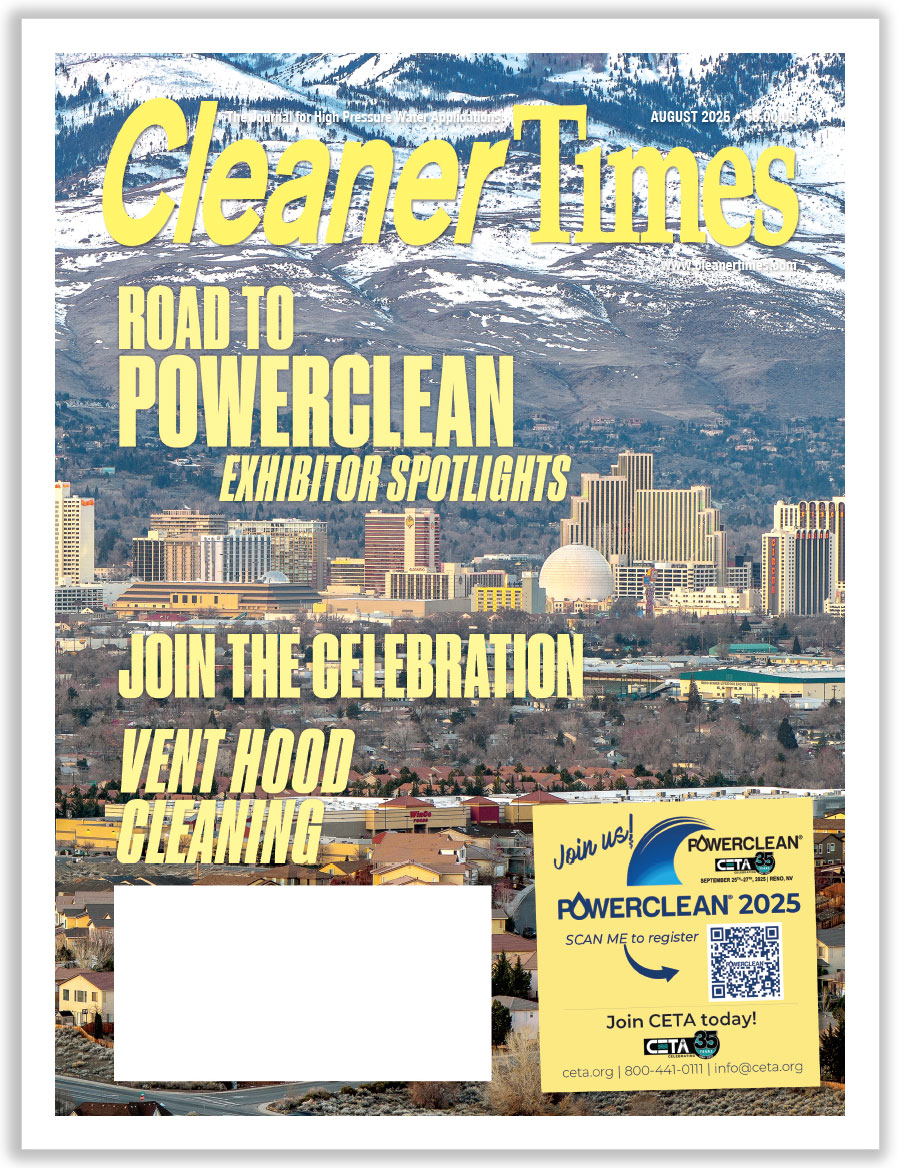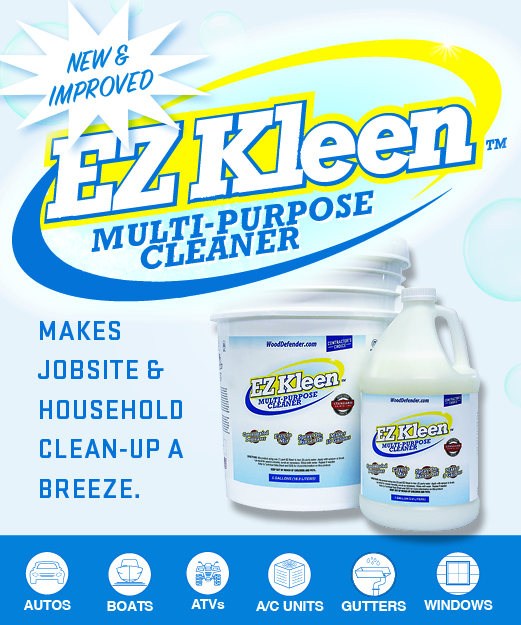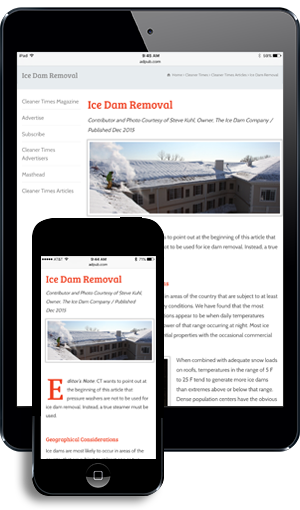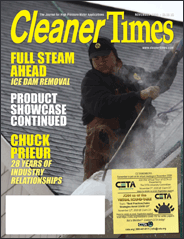
Vent Hood Cleaning
by Diane Calabrese | Published August 2025
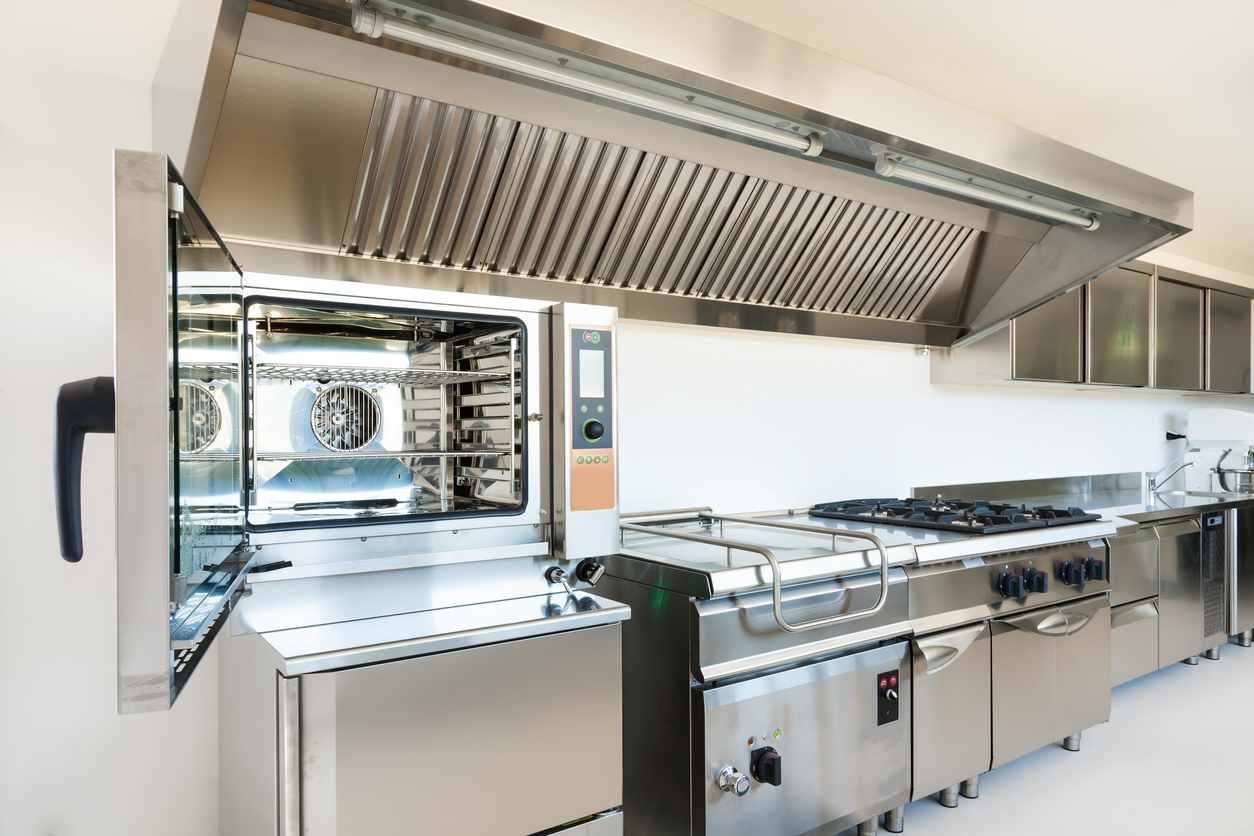
Even the thinnest veneer of grease invites trouble. Far worse than being a welcome mat for vermin, grease is a fire accelerant.
The last thing anyone wants near an open flame or high heat is a fire accelerant. Vent hood cleaning is a serious undertaking. It’s also a heavily regulated undertaking.
The U.S. Fire Administration, which is part of FEMA, records the incidence and types of fires. Its list (by its own disclosure) is not comprehensive (and under records). Nevertheless, it is alarming.
For the 10-year period from 2014-2023 cooking was the leading cause of non-residential building fires according to the USFA. Unfortunately, across the same period there was a 13 percent increase in such fires. (The fire statistics are concerning in many ways. For instance, there was 116 percent increase in intentionally set fires during the 10-year interval.)
Contractors who offer vent hood cleaning play an important role in reducing the risk of accidental kitchen fires. Commercial kitchens, health and hospital facilities and others who hire them (usually through bids) expect exacting results.
The overarching standard for vent hood cleaning comes from the National Fire Protection Association (NFPA). It is NFPA 96.
Overarching is the correct descriptor for NFPA 96 because it’s the starting point for states and municipalities, or regional authorities, which set the rules for their jurisdiction. Even with all appropriate training completed, a vent hood cleaner must be sure that it complies with the rules that apply in the locale where the vent hood is located.
Take one example. In Massachusetts, the State Fire Marshal administers certificates of competency and the Department of Fire Services grants licenses. There are two kinds of competency certificates, a restricted one for owners who clean their own kitchen exhaust systems and an unrestricted one for vendors of cleaning and inspection services.
The NFPA (NFPA.org) dates to 1896. It originated in Boston, MA. In 129 years, the non-profit organization has grown to have a global reach. It develops and promulgates safety standards in electrical and building construction in addition to fire prevention.
NFPA 96 has become the industry standard for vent hood cleaning. In the simplest terms, vents and hoods must be cleaned down to bare metal, or in other words, no grease residue anywhere.
The frequency of cleaning recommended (and corresponding inspections) is considered a minimum. And many states and municipalities mandate more frequent intervals.
Frequency ranges from monthly for systems with solid fuel cooking operations to annually for systems with low volume cooking operations, such as churches and seasonal businesses. Some jurisdictions require facilities to display certificates of inspection.
Not every jurisdiction in the United States requires certification in vent hood cleaning as a requisite to tackling the job. But the majority do. Anyone serious about adding the service should obtain training and certification, even if it’s not mandated locally.
Training ensures that a contractor fully understands all the elements of NFPA 96. Consider a few of them.
Sampling from NFPA 96 prescriptions: Prior to cleaning, all electrical switches that could be accidentally activated should be locked out. At the same time, though, fire suppression systems should be kept operable. Solvents or cleaning aids that are flammable should not be used.
Although OSHA [Occupational Safety and Health Administration] has no standard related specifically to vent hood cleaning, OSHA 1910 subpart L deals with fire protection and standard 1910.160 covers fixed extinguishing systems. The extinguishing systems must be a match for the fire hazard they would need to combat.
And the employer of a vent hood cleaning team would have to be certain the team has the correct extinguishing system.
Vent hood cleaning makes demands on contractors that some other services do not. For one, the work will often have to be done at night. And most commercial and health facilities bid out the work.
Then, there’s the wastewater from the cleaning. The jurisdiction where the cleaning is done may have many requirements
Publicly owned treatment works (POTW) aiming to stay within their pollutant discharge limits under the NPDES [National Pollutant Discharge Elimination System] may add a layer of compliance for vent hood cleaners. The compliance will entail sealing internal plumbing that does not drain to a grease interceptor, for example.
The grease interceptor grabs the wastewater until it can be removed and treated for disposal. Chemicals used in cleaning also mark wastewater for special treatment in some jurisdictions.
Knowing how to price a job in a bid submission will not be easy for a novice vent hood cleaner. Completing recognized training and experience will help a contractor to achieve precise, profit-turning bids.
Train first
All except the newest members of our industry know Phil Ackland and the eponymous training school he launched in 1990. Much of the day-to-day operation of the kitchen exhaust training and logistics at the school based in Fort Worth, TX is now handled by Lemuel L. (Speedy) Lassiter, president of the Lassiter Group, LLC.
Lassiter has deep experience in all things related to kitchen exhaust. “I have been with Mr. Ackland as an instructor for 19 years,” he explains. “I am a former student that became an instructor for commercial kitchen exhaust cleaners and then moved into training fire inspectors.”
In fact, Lassiter’s broad experience has global reach. “I have seen commercial kitchen exhaust systems in six countries on three continents, and the Caribbean,” he says. “I have also taught at the Georgia Fire Academy and the New Hampshire Fire Academy.”
Lassiter took over as managing partner for Ackland Sander Consulting (provides training for Fire Inspectors) in 2022. He is an unequivocal advocate for thorough and proper training.
Suppose a contractor with no experience in vent hood cleaning wants to enter the niche. What’s the place to start?
“I would suggest doing one’s due diligence and research the professional training available,” says Lassiter. “In doing so, look for a training facility that has good reviews and has been in business for some time, one that teaches the nuts and bolts of the kitchen exhaust cleaning business, one that also covers — teaches — the NFPA 96 requirements for this niche market, and most importantly; one that can offer some sort of accreditation (certification) that is recognized by the majority of the authorities having jurisdictions out there.”
What about taking an online class? “Being new to the industry, an online class with no particular hands-on instruction is not much benefit to the newcomer,” says Lassiter.
What reduces the benefit? “There are a lot of hazards associated with this particular field, and without experienced guidance and training, these can be costly to the new business owner,” explains Lassiter.
A contractor who has completed appropriate training benefits his or her own business and the business of his or her clients. “Proper training is important for the newbie in the industry to not only protect their investment but to make sure that they are properly protecting their clientele,” says Lassiter.
The need for recognized training extends beyond the contractor and that’s important to keep in mind. “NFPA 96 requires that the person(s) inspecting and cleaning a commercial kitchen exhaust system – aka hood system — be properly trained, qualified, and certified acceptable to the authority having jurisdiction.”
[The ‘authority having jurisdiction’ is the term for the entity that determines the rules for hood cleaning in a particular place. As reviewed in the first section, it could be the state or a municipality.]
“A quality training program will have requisites that have to be met in order to become certified, and once certified, to maintain that certification,” says Lassiter. Just as in any area where certification is required, maintaining certification is important because things change and because skills remain sharp when they are refreshed.
Contractors who decide to enter the hood vent cleaning niche should understand the work is an integral part of fire prevention. “A lot of existing contractors jump into this line as an ‘add-on’ business to generate additional income to go with their current business, failing to comprehend the requirements for the process, the hazards involved, and the dangers involved in commercial kitchen exhaust cleaning,” says Lassiter.
Working at night and from elevated positions will prove quite different from working in daylight on flat surfaces, says Lassiter. Fall restraint devices may be needed. “[And] you will be working around electrical equipment that will require securing — lock-out/tag-out, expensive cooking equipment that must be protected, and of course roof surfaces that can be easily damaged.”
There’s a bit more to keep in mind before deciding that the niche is a good fit. “[This] is a year-round business and that in some locations the contractor will be having to deal with extreme temperatures, which in colder climates can cause damage to equipment, property, and personnel,” says Lassiter.
Finally, there’s liability to consider. Residual grease left in duct work (i.e. a non-thorough job) will act as fuel if an equipment fire starts. A fire that spreads to ducts can result in a catastrophic loss for which the contract can be held liable.

